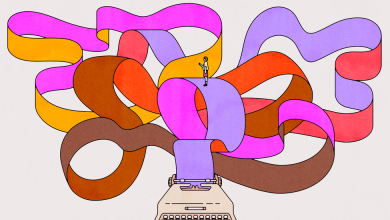Beneath a Blanket of Stars

At 4:30 a.m. on Jan. 17, 1994, a magnitude 6.7 earthquake caused a citywide power outage in Los Angeles. I lived there at the time and was among the many Angelenos who made their way outside, looked up and found a spectacular sight: a vast blanket of stars that had been blotted out for generations by light pollution. It was reported that some people were so bewildered by the diaphanous Milky Way, they called 911 and the Griffith Observatory to report strange, unidentified objects in the sky. I only remember being awe-struck.
Roughly 99 percent of the people living in the United States and Europe see only a dim approximation of stars in the night sky, nothing close to the bright firmament that our ancestors witnessed before humans harnessed electricity. The New World Atlas of Artificial Night Sky Brightness, the study that reported the findings, also found that 83 percent of the world’s population cannot see a naturally dark sky because of the light emanating from cities.
Armed with those statistics, I found myself again looking skyward last October, this time lying face up on a long stone slab at Arches National Park in Utah. Surrounded by strangers, I was trying to locate the Pleiades star cluster, also known as the Seven Sisters, and our nearest spiral galaxy, Andromeda. My first trip in two years since the pandemic required a destination that felt new and otherworldly. As it turns out that is Utah with its biblical terrain and preternatural cobalt sky, a sky that also happens to be ablaze with stars at night.
Arches National Park is one of 200 International Dark Sky Places, each designated by the Arizona-based International Dark Sky Association (IDA), a group of astronomers, evolutionary biologists, and conservationists that promotes awareness of light pollution and its effects on wildlife, climate change and human health.
For Bettymaya Foott, an astrophotographer and the director of engagement for IDA, the detrimental effects of light pollution are profound: “To me one of the most significant ways it affects us as humans is that it decreases our connection with the universe,” she said. “With all of the divisions going on, looking up to the night sky connects us to the biggest mystery in our world and helps us get in touch with the fact that we are all humans on spaceship earth.”
In 2001, the IDA began awarding Dark Sky designations to communities, parks, reserves and sanctuaries. To receive the coveted designation, Dark Sky Places must pass through a rigorous application process that includes controlling the directional flow of outdoor lighting, the use of timers, limiting sign illumination and other policies, including ongoing community education.
There are now Dark Sky Places in 51 countries, including the United States, Canada, Britain, Taiwan, the Netherlands, Namibia, Chile, Denmark and the tiny island nation of Niue in the South Pacific. Several U.S. cities have been designated Dark Sky Communities, 26 in all, including Flagstaff and Sedona, Ariz., and Ketchum, Idaho, along with smaller towns such as Homer Glen, Ill., and Horseshoe Bay, Texas. The IDA also lists 89 designated parks, reserves, and sanctuaries in the United States. Among them is Arches National Park, one of Utah’s 15 officially designated Dark Sky Places, the most in one province, state or country in the world.

Venus rising amid a blanket of stars.Credit…John Burcham for The New York Times
Beneath a waning moon
In planning my trip to Utah, I took some advice from Ms. Foott and scheduled my trip as close as I could to the new moon, when the sky is darkest.
“Light from the moon may seem dim, but it can dramatically alter the nighttime scene,” Ms. Foott said. “A new moon is the best time to see faint celestial objects that can be washed-out by moonlight like the Milky Way and faint stars. This can also be achieved when the moon has set, or when the moon is only partially illuminated.”
On the morning of Oct. 4 — as the moon was waning — I deplaned at Salt Lake City International Airport, and headed by car to the town of Moab, about 230 miles southeast and the gateway to Canyonlands and Arches, two of Utah’s “Mighty Five” national parks, which also include Bryce Canyon, Capitol Reef and Zion.
In my tiny Ford Fiesta with all the windows down, I got my first glimpse of Utah’s often-photographed sandstone formations, spires, buttes and hoodoos (or earth pyramids) as well as the undulating canyons and natural bridges that make the state so geographically vivid. With only a few days away from caring for an elderly parent, I was constrained for time, so I needed to bypass another nearby hub for stargazers, Canyonlands National Park, and concentrate solely on Arches, where I planned to meet up with an old friend, Thom Harrop, a Utah native and photographer.
After hours of driving, and a little grubby, I pulled into the former mining town of Moab, which acts as a base camp for tourists, rock climbers, mountain bikers, hikers and stargazers. A range of restaurants in Moab caters to a variety of tastes while a growing number of hotels serves the needs of those who want to kick about the sandstone and then sleep in crisp sheets, a demographic in which I squarely fall.
While still back home in Tennessee, I heard that a long-utilized ad hoc stargazing site at Arches called Panorama Point had recently been upgraded. Joette Langianese, the executive director of the Friends of Arches and Canyonlands Parks, the nonprofit organization that was critical in getting the dark-skies designation for both parks, confirmed that they had built an outdoor sky-viewing space with telescope pads and seating for 75 people.
“Lately, people are going there with their own telescopes, and sometimes a ranger will just come out and talk to them,” Ms. Langianese said. “Both Canyonlands and Arches have scheduled night sky programs, but, because of Covid, they were canceled, so they’ve been happening sort of automatically.”
I’d been keeping a wary eye on an increasingly moody weather forecast, with the most promising night for weather being the day I arrived; that night there would be just a sliver of moon — nearly perfect conditions for stargazing. If I had only one night to commune with the heavens, I was going to make sure I didn’t miss it, so, after unpacking — and a really good vegetable korma at Indo Grill in town — Thom and I made our way to Arches, the route taking us past some of the park’s most fantastic sandstone formations.
Fighting light pollution
During the winding drive, I relayed to Thom the conversation I had recently had with Dr. Jeffrey Hall about the effects of light pollution. Dr. Hall is chair of the American Astronomical Society’s Committee on Light Pollution, Radio Interference, and Space Debris. He said the light flooding from cities is making observing the universe more difficult for astronomers, but it also is increasingly impacting the planet’s ecosystems.
“This goes well beyond astronomy,” said Dr. Hall, who is also the director of the Lowell Observatory in Flagstaff, the first city to be designated a Dark Sky Community in 2001. “Indigenous peoples across the world understand themselves and their origins through stories of the stars, and there are many species that use the night sky for navigation and reproduction. Sea turtles rely on dark beaches to lay eggs; their offspring use the natural light of the ocean horizon to find the sea. If there are condos or townhouses close by, that natural navigation can get lost.”
Five miles past the park’s entrance, we came upon the Courthouse Towers cluster: the Three Gossips, Sheep Rock, the Organ and the Tower of Babel, a 300-foot rock sentinel so close to the road it made me gasp. Utah is unlike any place I’d ever been, the topography so extraordinary it was impossible not to be in a constant state of astonishment. We drove until we got to the Balanced Rock — 128 feet of precariousness — and then made our way to our destination.
We arrived at Panorama Point with the setting sun saturating the sandstone’s varying hues of coral and burnt umber. The overlook is well-suited for stargazing because its position on a hill offers unencumbered views. With some sunlight left, we could see the La Sal Mountains and the Fiery Furnace, a collection of narrow canyons, fins and natural arches near the park’s center.
Stargazing is a year-round activity, Ms. Foott said. The cooler seasons are better for air clarity because cold air cannot hold as much moisture as warm air, and moisture-heavy atmosphere can make the sky hazy. The Milky Way’s galactic core is visible from March through November, when I was there. From November through February, she said, it’s the outer edge of our spiral galaxy that we see.
While Thom was setting up his camera, I talked with Grace and Jim Bishop, an amiable couple who were voyaging through Utah’s public lands.
“We’re here specifically for this,” Ms. Bishop said, motioning skyward. “We’ve wanted to do this for a long time, traveling though the national parks in southern Utah primarily for the night sky.”
They were not alone. People from South Dakota, Missouri, Oklahoma, Florida and New Mexico were there. Astrophotographers and weekend astronomers were setting up tripods. Groups were unfolding lawn chairs and pulling out blankets. We were all prepping for something people had taken for granted for thousands of years.
Travel Trends That Will Define 2022
Looking ahead. As governments across the world loosen coronavirus restrictions, the travel industry hopes this will be the year that travel comes roaring back. Here is what to expect:
Air travel. Many more passengers are expected to fly compared to last year. You’ll still need to check the latest entry requirements, and wear a mask for now. But more destinations will be within reach as countries reopen to tourists.
Lodging. During the pandemic, many travelers discovered the privacy offered by rental residences. Hotels hope to compete again by offering stylish extended-stay properties, sustainable options, rooftop bars and co-working spaces.
Rental cars. Travelers can expect higher prices, and older cars with high mileage, since companies still haven’t been able to expand their fleets. Seeking an alternative? Car-sharing platforms might be a more affordable option.
Cruises. Despite a bumpy start to the year, thanks to Omicron’s surge, demand for cruises remains high. Luxury expedition voyages are particularly appealing right now, because they typically sail on smaller ships and steer away from crowded destinations.
Destinations. Cities are officially back: Travelers are eager to dive into the sights, bites and sounds of a metropolis like Parisor New York. For a more relaxing time, some resorts in the U.S. are pioneering an almost all-inclusive model that takes the guesswork out of planning a vacation.
Experiences. Travel options centered around sexual wellness (think couples retreats and beachfront sessions with intimacy coaches) are growing popular. Trips with an educational bent, meanwhile, are increasingly sought after by families with children.
Twelve long stone slabs were available in the viewing area, long enough for an adult human to lie down on, which is what I did. A young family with two boys under 8 sat on the long stone next to me. They were looking at a tablet, then up at the sky, making use of, I gathered, this perfect confluence for a family outing during a pandemic: a beautiful setting, ideal weather and a little digital learning beneath the stars.
As the sun retreated below the horizon, my eyes began to adjust to dusk. Watching the night sky change is something I had never done, and it was more eventful than I expected. Every now and then someone would quietly say “wow” as a planet would come into view: Mercury, Venus, Saturn and massive Jupiter, so bright it looked counterfeit. It was as if we were all at a royal wedding waiting for the bride: the Milky Way.
I had downloaded an app called SkyView for $1.99 that, when held up to the sky, would show and name the planet or star within its view, every sky object imaginable, even the International Space Station. I found the Pleiades star cluster and the Andromeda galaxy. I’d heard that, with binoculars, one could see Andromeda’s spiral, so I brought them out; I couldn’t determine its shape, but then again. I didn’t know we had a “neighboring galaxy” we could see until about a month before my trip.
This sky was so lousy with stars it was difficult to make out anything specific, but my app easily found the constellations Pegasus, Leo, Capricorn and Virgo, my zodiac sign. Even with an overcast sky, or in a bright city, sky-charting apps work because our phones know the date, time and our location, and then, using their compass and gyroscope, they can show us what’s in the sky even if we can’t see it.
I put my phone down, gazed up and recognized that what I had thought was a long and high gossamer-like cloud was, in fact, the dust, gas and billions of stars that make up the Milky Way. Over the next hour it became so pronounced that it was one of the most heart-stoppingly beautiful things I’d ever seen, slightly white and effervescent in certain parts, in other places tributaries of purple and gray appeared to be emanating from its center; north, south, east and west were rendered arbitrary as Earth became irrelevant. I stayed for at least another hour because I knew I might not have a chance like this any time soon.
And I didn’t. The following night the rain released the earthy smell of Utah’s sandstone. The third night was expected to be cloudy, so I hung out with my friend who lives with his wife in Denver. Over lunch, we pulled up a light pollution map on my laptop. The map showed that the entire eastern half of the United States is seriously affected by sky glow. We wondered where our respective home cities were on The Bortle Scale, the widely used numerical system that rates the amount of light coming from any given place, 1 being the darkest and 9 being close to starless. The centers of our homes, Denver and Nashville, we discovered, are both 8 and 9 — as are large cities such as New York and Chicago. In our home cities, we could see only “some” stars and planets, and, of course, our moon.
In these larger cities, Ms. Foott told me, the association is reaching out with an awareness campaign called Urban Night Sky Places: outdoor spaces in, or adjacent to, urban areas where lighting practices serve as examples of best practices, like the Forest Preserves of Cook County near Chicago and Stacy Park, just west of St. Louis, Mo.
As individuals, she said, we can alter the outdoor lighting at our homes using the IDA’s five basic principles of outdoor lighting. Though the principles are specific, the main thrust is that outdoor lighting should be purposeful, intentionally directed, in the amount needed and no more, and the use of warm lighting instead of cooler, blue lighting is preferred.
Their hope is that the campaign will plant seeds now to help stem some of the light flooding the skies, so affected areas can recover.
A few weeks after I returned home, I drove an hour and a half west of Nashville into “the country” and looked up. It was a good night for stars, though chilly, but still not star-spangled.
I put my app to the sky and on my screen viewed the vast firmament of stars that I would have been able to see if it were not for the competing light from the surrounding communities. I wondered if viewing stars through smartphones would ultimately be how we would experience a vivid night sky.
For now, I’ll gladly travel.
Follow New York Times Travel on Instagram, Twitter and Facebook. And sign up for our weekly Travel Dispatch newsletter to receive expert tips on traveling smarter and inspiration for your next vacation. Dreaming up a future getaway or just armchair traveling? Check out our 52 Places list for 2022.





